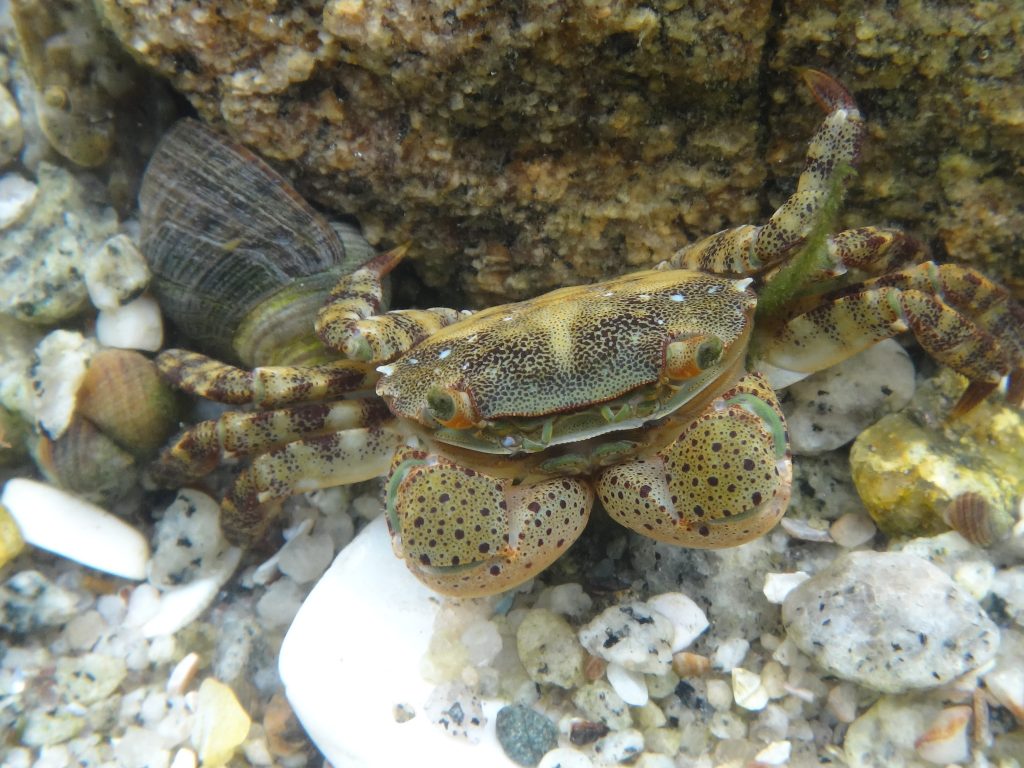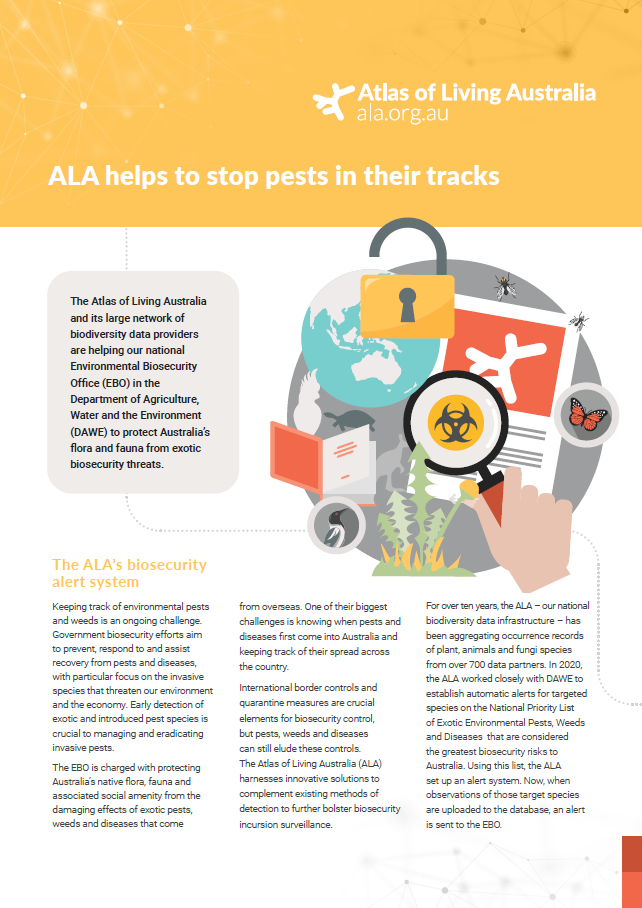ALA biosecurity alert system
Keeping track of environmental pests and weeds is an ongoing challenge. Government biosecurity efforts aim to prevent, respond to and assist recovery from pests and diseases, with particular focus on the invasive species that threaten our environment and the economy. Early detection of exotic and introduced pest species is crucial to managing and eradicating invasive pests.
The EBO is charged with protecting Australia’s native flora, fauna and associated social amenity from the damaging effects of exotic pests, weeds and diseases that come from overseas. One of their biggest challenges is knowing when pests and diseases first come into Australia and keeping track of their spread across the country. International border controls and quarantine measures are crucial elements for biosecurity control, but pests, weeds and diseases can still elude these controls.
The Atlas of Living Australia (ALA) harnesses innovative solutions to complement existing methods of detection to further bolster biosecurity incursion surveillance.
For over ten years, the ALA – our national biodiversity data infrastructure – has been aggregating occurrence records of plant, animals and fungi species from over 700 data partners. In 2020, the ALA worked closely with DAWE to establish automatic alerts for targeted species on the National Priority List of Exotic Environmental Pests, Weeds and Diseases that are considered the greatest biosecurity risks to Australia. Using this list, the ALA set up an alert system. Now, when observations of those target species are uploaded to the database, an alert is sent to the EBO.
ALA alert provides extra layer of defence

The value of the alert system has already been demonstrated regarding incursion reports in Victoria. In early 2020, a suspected sighting of the Asian shore crab by a member of the public on Port Phillip Bay in Victoria. This sighting was uploaded as a report into the ALA and provided the earliest available alert of the incursions. Early awareness of incursions into Australia by exotic species such as the Asian shore crab provide the best scenario for implementing successful management and eradication programs. If left unchecked exotic species can spread rapidly and compete with our native flora and fauna.
This episode demonstrated that the ALA notification system can provide over 9 months earlier warning of an incursion. Another example of the benefits of the ALA notification system, involving an exotic wasp, demonstrated that an incursion could be found 24-36 months earlier than the current reporting system. The notification system can also include a facility to validate and amend reports, which can be important for clarifying Australia’s pest status. Citizen science apps such as iNaturalist Australia, among many others, feed data into the ALA and directly contribute to the national biosecurity surveillance system.
“The ALA alert system is simple and is proving to be an important asset to our operational capability,” said Andrew Pearce, from DAWE’s Environmental Biosecurity Office.
“This is a layer of defence we haven’t had before and it has excellent potential for further development and expansion to deliver a low cost biosecurity surveillance and monitoring capability.”
The national biosecurity alert system is an excellent example of how the ALA is able to provide trusted biodiversity data to support environmental biosecurity program managers and help deliver better outcomes for Australian ecosystems and environments.
For more information
- Visit ala.org.au or contact support@ala.org.au
- View or print this impact story as a PDF
